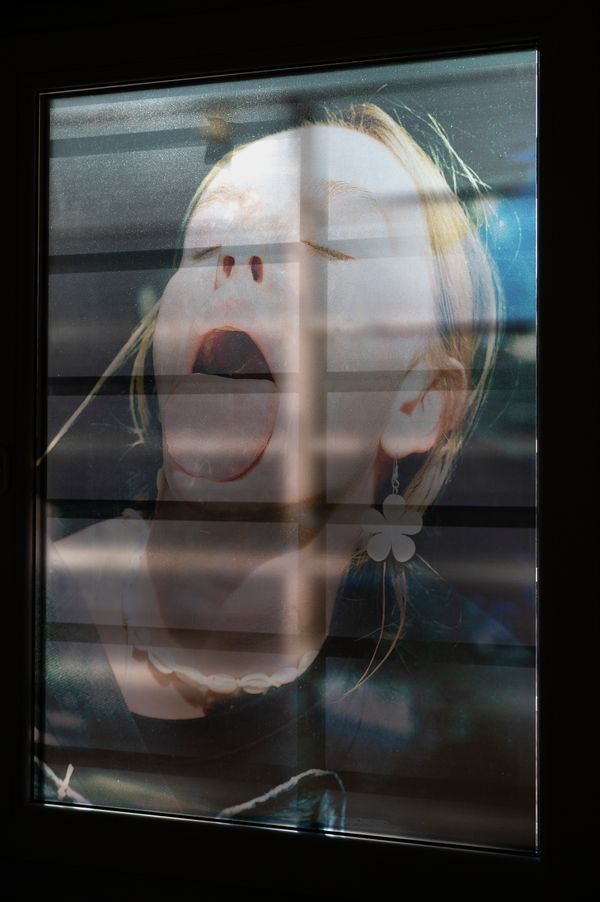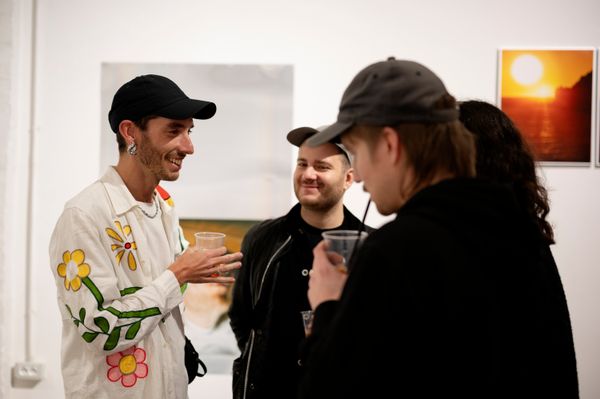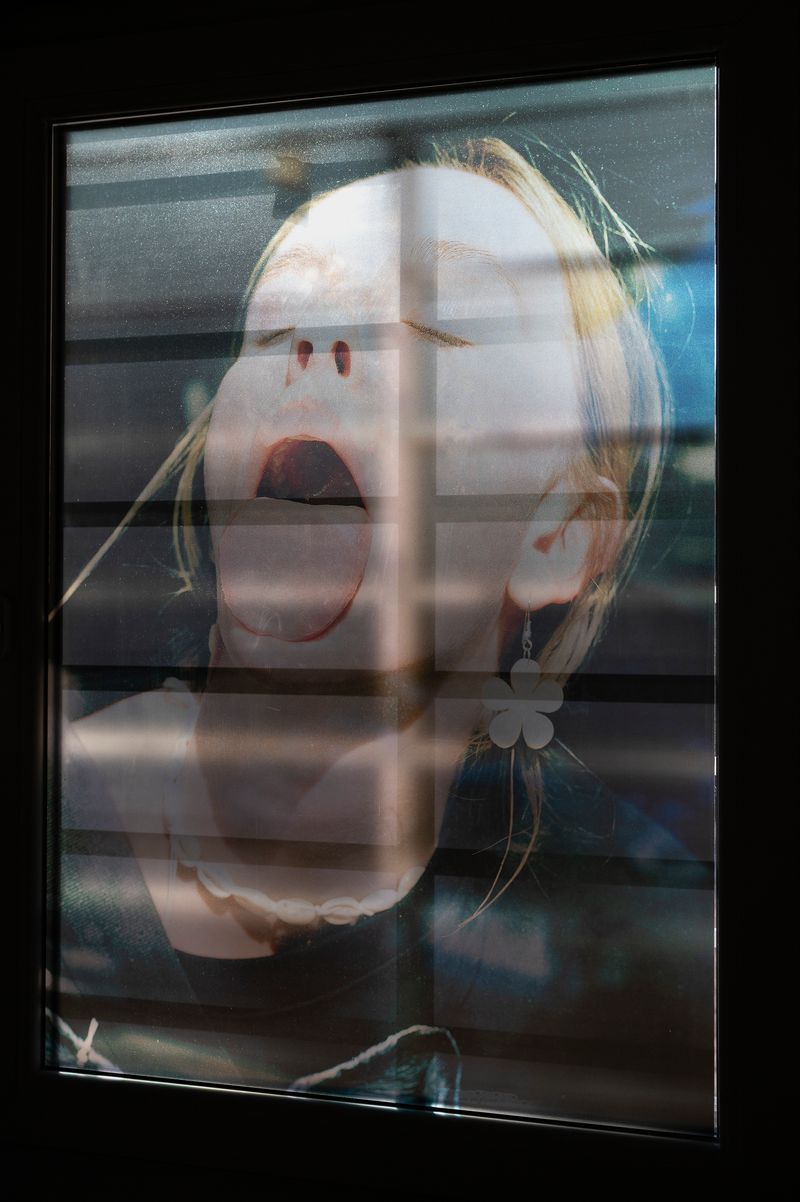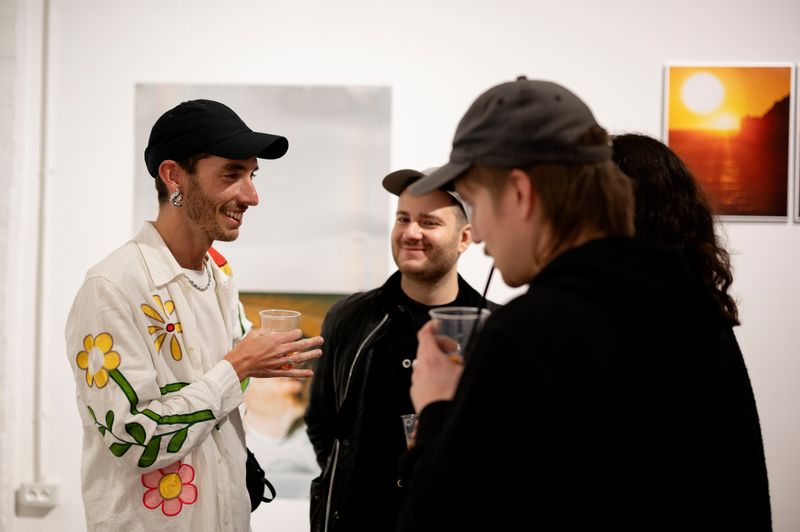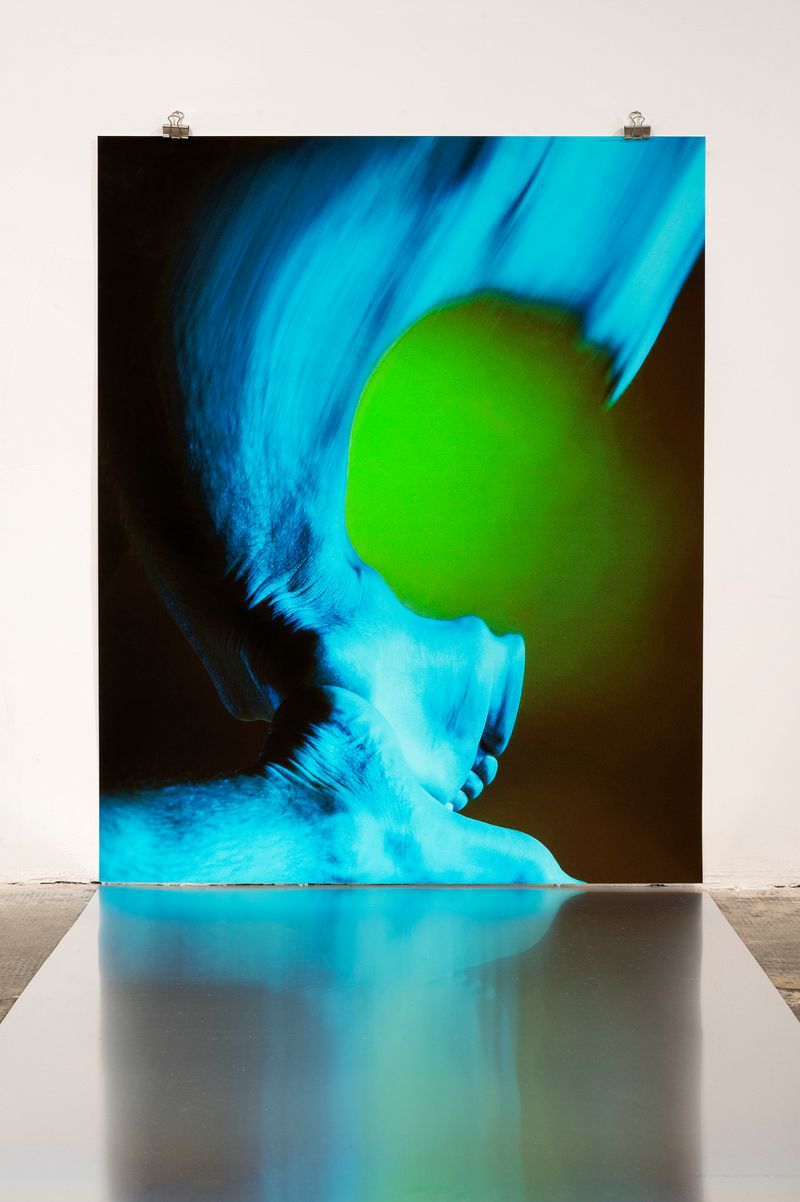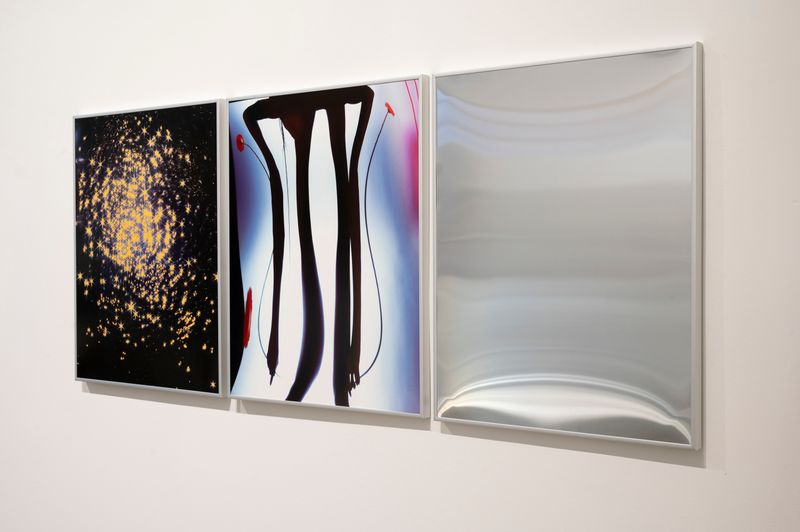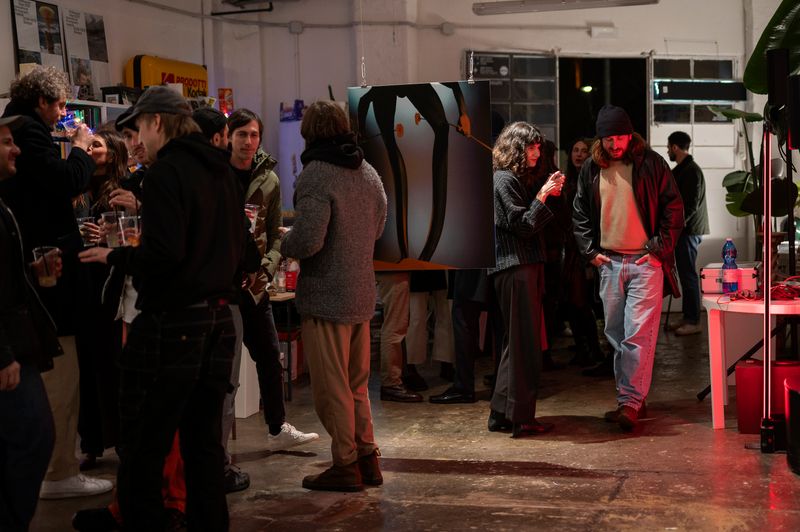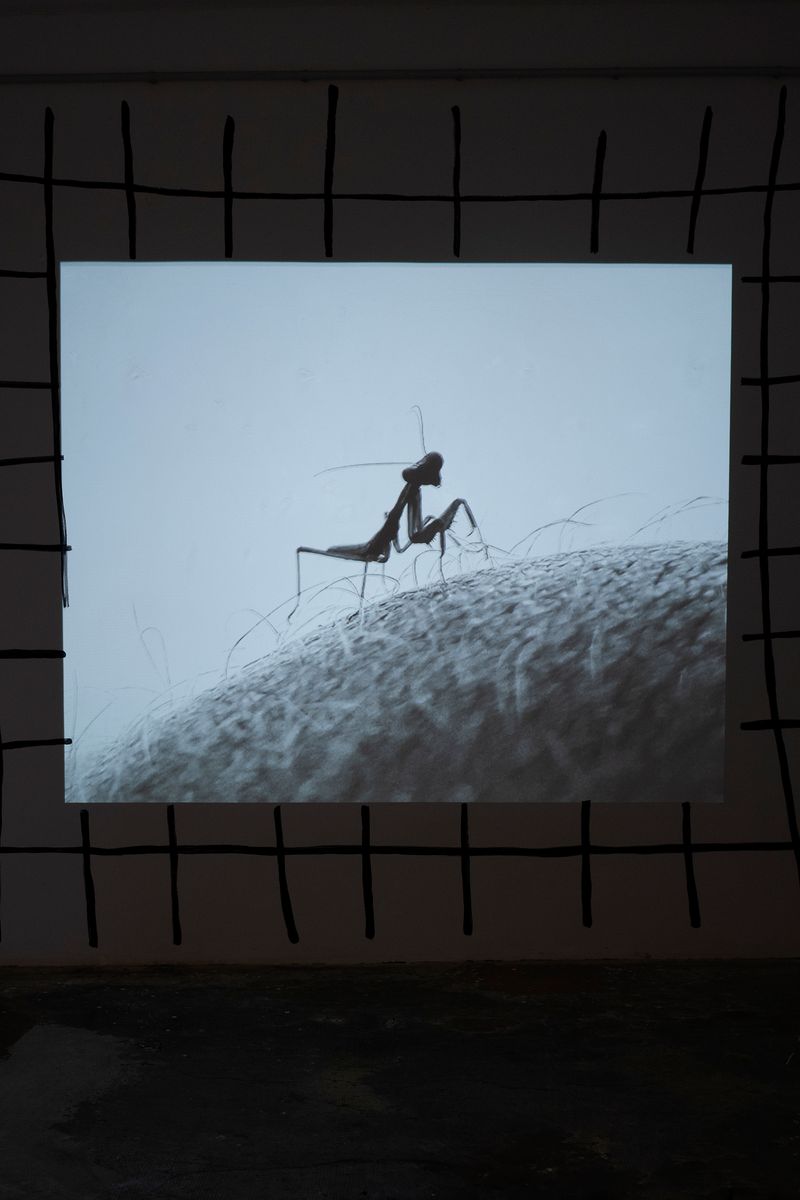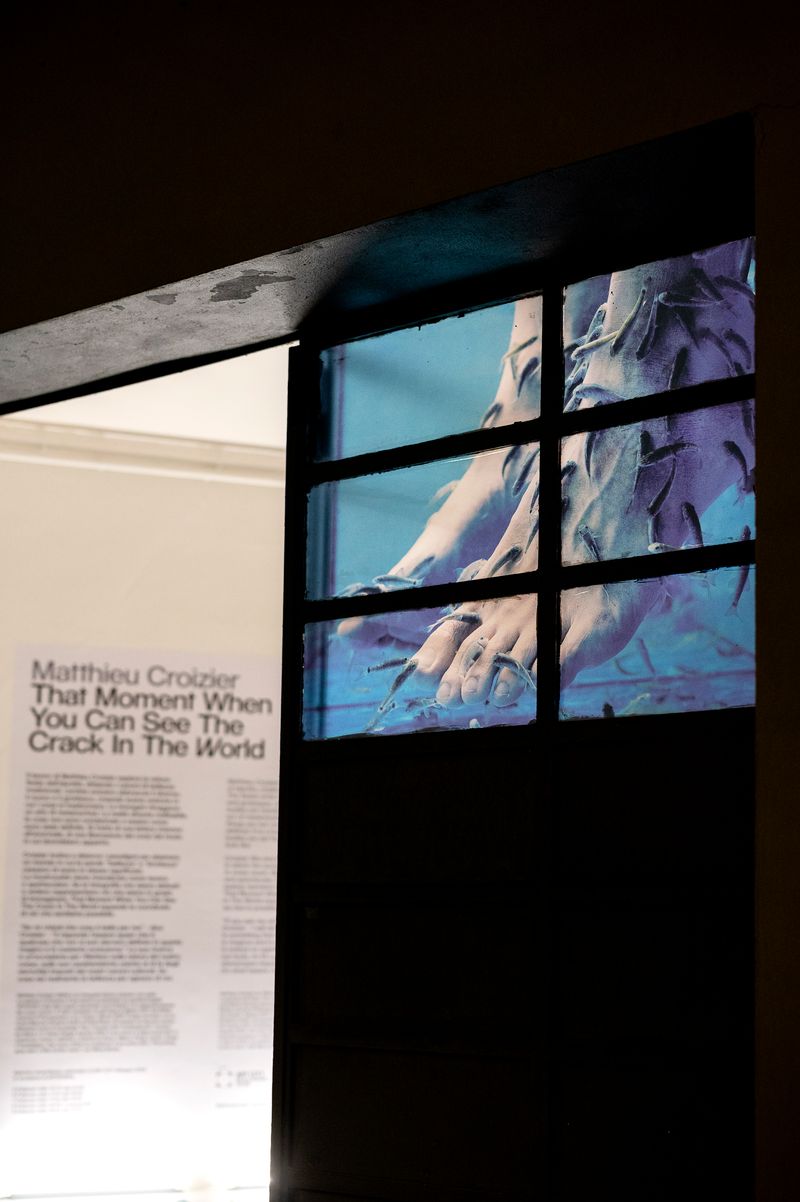Matthieu Croizier On His Exhibition That Moment When You Can See The Crack In The World at PhMuseum Lab
-
Published18 Feb 2025
-
Author
That Moment When You Can See The Crack In The World explores the fluid nature of identity. Thanks to the PhMuseum 2024 Photography Grant, Croizier's work was exhibited in Bologna, challenging traditional beauty standards.
The Swiss artist embraces the different, the new and grotesque, creating dreamlike scenes in which bodies are transformed. The images portray an act of metamorphosis. Reality becomes malleable, things are not condemned to be as they were defined.
That Moment When You Can See The Crack In The World tilts and shifts paradigms to shape a world in which the words “beauty” and “ugliness” cease to mean much. Monstrosity is claimed as tender and spectacular, queerness is a magical and constant act of mutation. If the photographs we are used to seeing represent what we are able to imagine, Croizier's work expands the coordinates of what we feel is possible. Reality has opened up, free and in flux. With the 2025 Photography Grant's applications closing on Thursday, we touched base with Matthieu Crozier to learn about the aesthetic choices in his work and to look into the process behind his exhibition at PhMuseum Lab.
Ciao Matthieu, you wrote that That Moment When You Can See The Crack In The World is “a love letter to the abnormal”, “a farewell to the norm”. How do the aesthetic choices in your work reflect and celebrate the concept of "abnormality"?
For me, the concept of abnormality involves many things, details or more obvious things, but above all it's a way of looking at things and showing them. Depending on how you photograph something, you can make something quite ordinary seem extraordinary. The Géante Rouge image, for example, of my body lit in red and photographed with a wide angle, makes it seem so huge that it overflows the frame. The silhouette of a hand in front of a flash becomes a sunset picture. The close-up of the fish pedicure taken out of context becomes something else, something quite strange. But in the end, most of these images are fairly ordinary things. What interests me is that it's ultimately the way we show things that defines whether they seem normal or not. Through the aesthetics of my images, I try to create another kind of beauty: the beauty of the strange. I also like to leave a lot of room for the viewer's imagination, to let them create their own story. I think that strangeness and vagueness allow this, like in a David Lynch film that you can watch again and again, without ever really fully understanding what the hell is happening there.
What are the main inspirations that influenced your work?
I should firstly quote Larry Mitchell's The Faggots And Their Friends Beetween Revolution, a queer manifesto inspired by the experience of queer communal living in the 1970s, from where the title of this body of work comes from: «The afternoon yogas end as the sun approaches that moment when you can see the crack in the world. Then the fairies gather to quietly celebrate. The darkness is for living together. The fairies eat and talk and sometimes read and sometimes dance and sometimes touch. The darkness is for doing whatever makes being together feel good.»
I am also very inspired by cinema, as well as painting, which are two mediums very close to photography. There is of course David Lynch, who was for what I can recall one of my first encounter with cinema, as my dad used to make us watch Mulholland Drive twice a year. When he passed away, Jane Schoenbrun wrote something on X with which I couldn't agree more: «Like Kafka, like Bacon, he dedicated his life to opening a portal. He was the first to show me another world, a beautiful one of love and danger I sensed but had never seen outside sleep. Thank you David your gift will reverberate for the rest of my life.»
Some other artists that come to my mind are Louis Fratino, Vojtěch Kovařík, Julia Ducournau, Wolfgang Tillmans, Mark McKnight, Jack Davison or David Cronenberg. I've also recently discovered Momo Okabe’s work in Les Rencontres d’Arles in 2024 and I am obsessed with her book Ilmatar.
Your creative process involves using the body as raw material—your own or that of people close to you. What is it like for you to photograph other people’s bodies, and to photograph yourself? How do you collaborate with the people you shoot with?
As for using my own body, it's great fun and very liberating. Also very practical, as it’s just there obviously. When I photograph other people, the most important thing is the relationship of trust that develops between us. So they can let themselves go. There's something very intimate about photographing someone, and it's really a collaborative act: I feel we create the image together. If there isn't that bond, that connection, the image will be bad. The people photographed in this exhibition are people I know well, so we already have this trust, but I also love to photograph people I don’t know. The camera becomes an excuse to meet people I would maybe never have met otherwise. I’m quite a shy person, and the camera gives me an accessible way to connect with people. That’s what I really love about photography.
What is the role of exhibiting in your practice? Are there some leitmotivs in the way you think of your shows?
I love to see exhibitions, there is something physical that happens, you need to move around in the space to see the images, so you engage with the work in a more active way. And of course the size of the images, the sequence and all of those other elements that you need to think about will create something very specific. And people will take the time to look at the images in more detail, they’ll pay more attention, so it can reach them in a deeper way I think. When I go to a show and when I love it, I feel like I’m now connected in some way to the artist and their work. I keep something of it in me.
Regarding possible leitmotivs, I guess there are some, like the presence of the grid drawn on the wall, but most of the time I try to display the images specifically for each space.
Looking at your exhibition at PhMuseum Lab, how do your images dialogue with the space? Do you think this show brought anything new to the way you display your work?
I really like the way the images dialogue with the space, especially the small images that are hidden in the corners, as well as the images printed on vinyl and displayed on the window. I love how those are shaped by the grid motif of the window and made more or less visible by the sun. The foot image is for instance visible from the inside during the day, and from the outside at night, since the light is then coming from the inside of the space.
And yes this exhibition did bring something new. The use of the windows first, and also the idea that you proposed to use those kinds of «deforming mirrors», which is something I also use in my images. It’s exactly the kind of way to display images that I’m interested in, when you can continue to experiment in the same direction as the project.
PhMuseum Lab’s backroom is dedicated to a video piece you had never displayed before. Can you tell us more about it?
Indeed, I have created this video specifically for this show. You asked me if I had any video I wanted to show in the backroom, and I thought it was the perfect opportunity to try and experiment on something I had been thinking of doing for a while but never did: to make a video only with footage from my phone mainly, small fragments of the ordinary taken here or there. While working on the editing, my nephew Paul became the main character of the film, but that was not originally planned. It’s called A Dog, A Snail, And A Lightning Bolt, because that’s some of the things you can find in it, as well as my mother talking about feet.
What advice would you share with those interested in applying for the PhMuseum Photography Grant?
Go for it. Don’t overthink it and apply, I guess that would be my advice. As I personally tend to be discouraged, always thinking it won’t work. Well you never know, can’t hurt to try, and keep up the good work.
----------
The PhMuseum Photography Grant has established itself as a leading prize in the industry over the last 12 years, renowned for recognising the importance of contemporary photography and for supporting emergent artists through cash prizes, exhibitions at international festivals, educational activities and exposure on online media. This year, PhMuseum Lab will offer a new solo show to one work selected from our open call. You are welcome to present your work before 20 February 2025 at 11.59 pm (GMT). Learn more and apply at phmuseum.com/g25.
Matthieu Crozier was named British Journal of Photography's Ones to Watch 2021, and selected among the Futures Talents 2021. Also a laureate of Paris Photo's Carte Blanche Students 2020. He recently exhibited at institutions such as Kunsthalle Trier, the Centre d’Art Contemporain Yverdon-les-Bains, and the Swiss Design Awards 2023. His work has been featured in numerous group shows and festivals including in Athens, Milan, Paris, London, Braga, and Guadalajara. In March 2024, he published his first book, "Everything goes dark a little further down" with Mörel Books. Beyond his personal projects, he undertakes commissions for clients comprising M le Monde, Esquire Italy, Zeit Magazine, Art Basel, On Running, Salomon, and Les Inrockuptibles.
